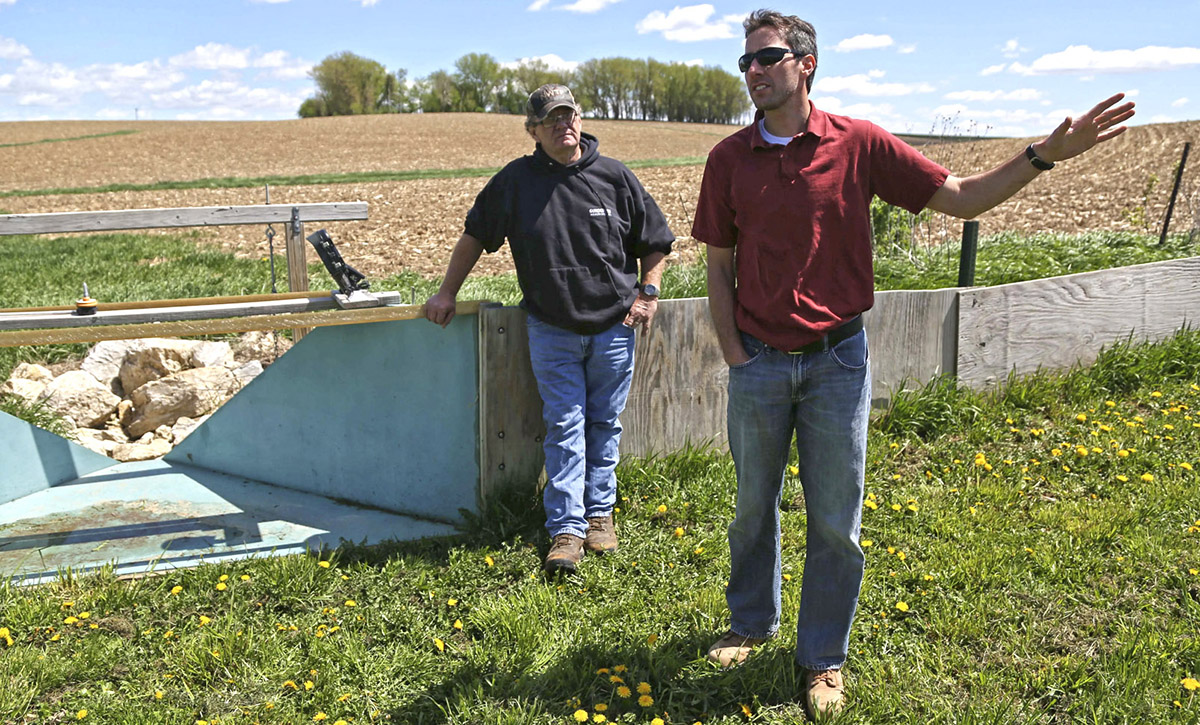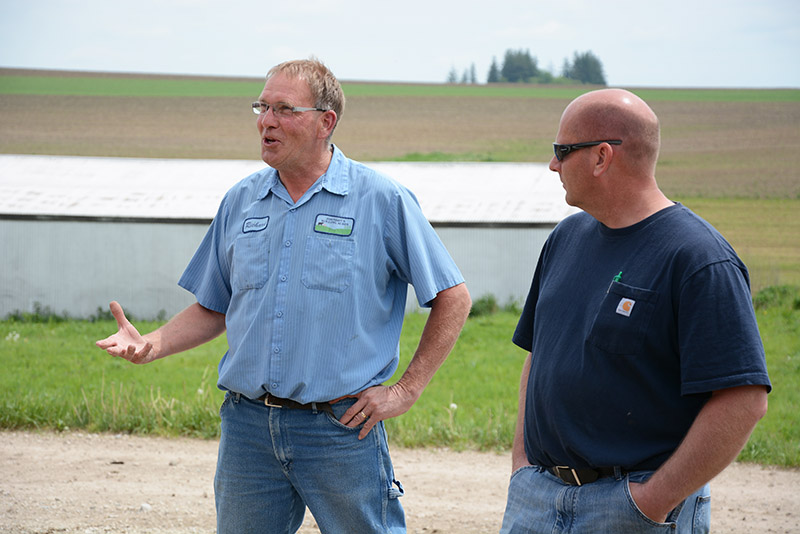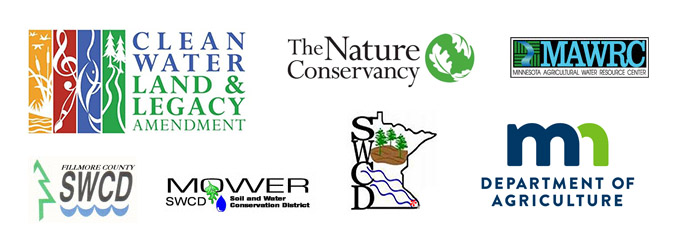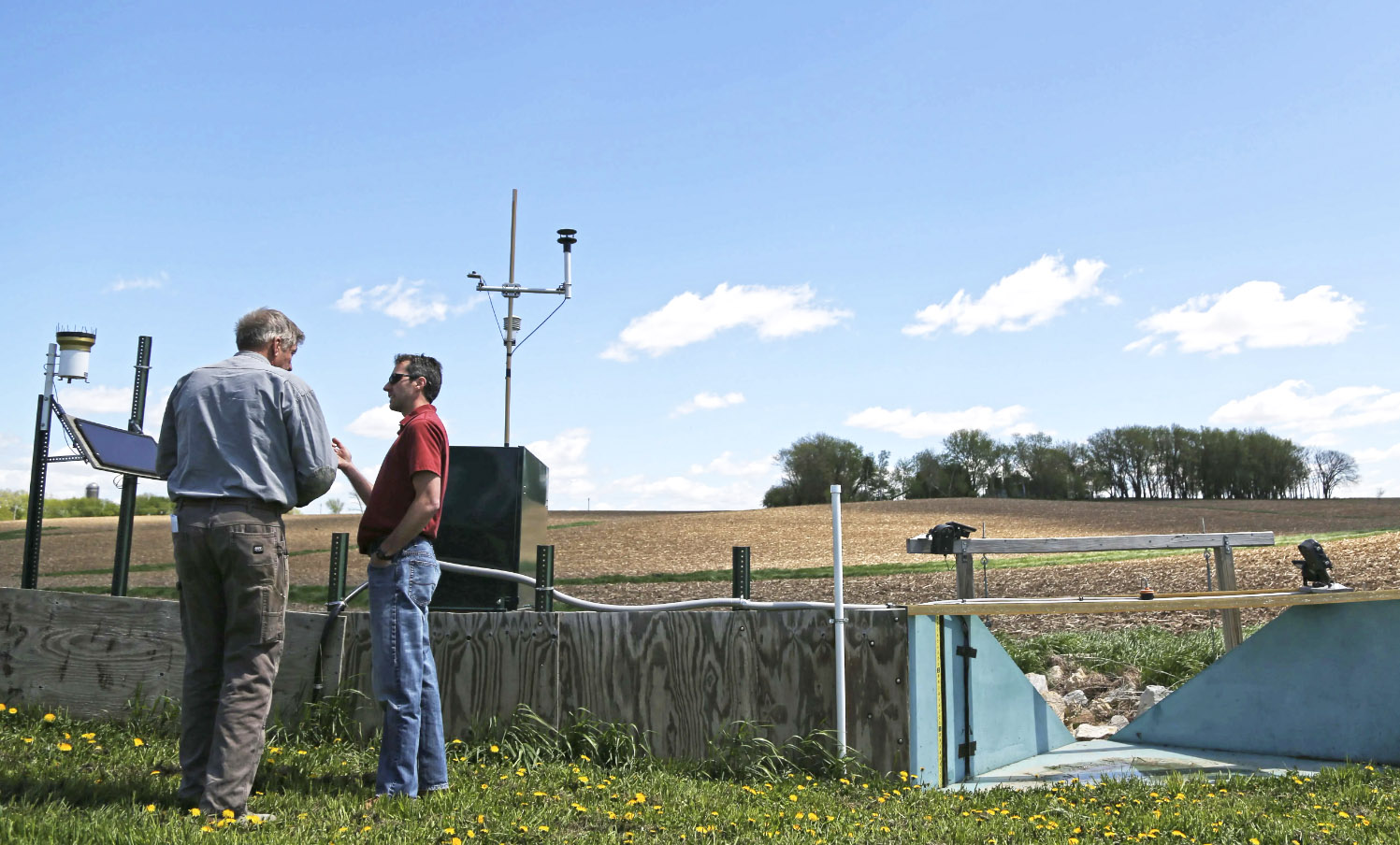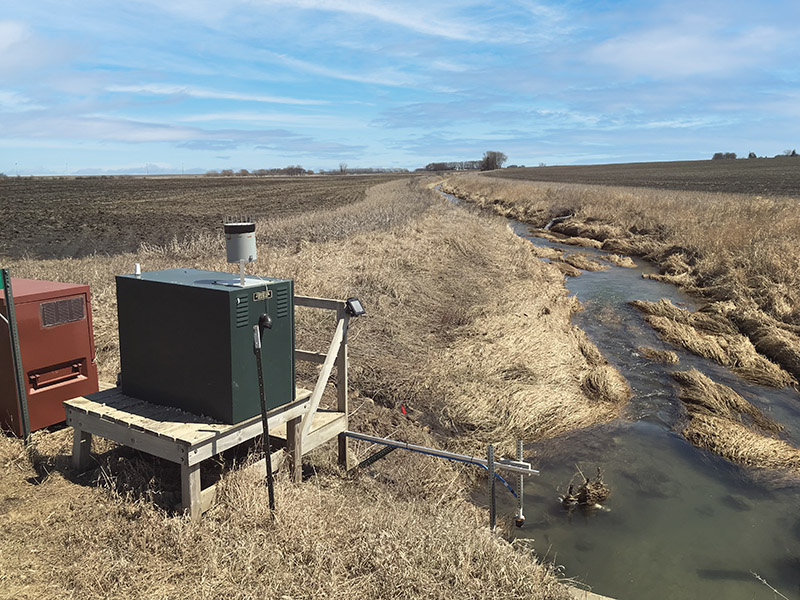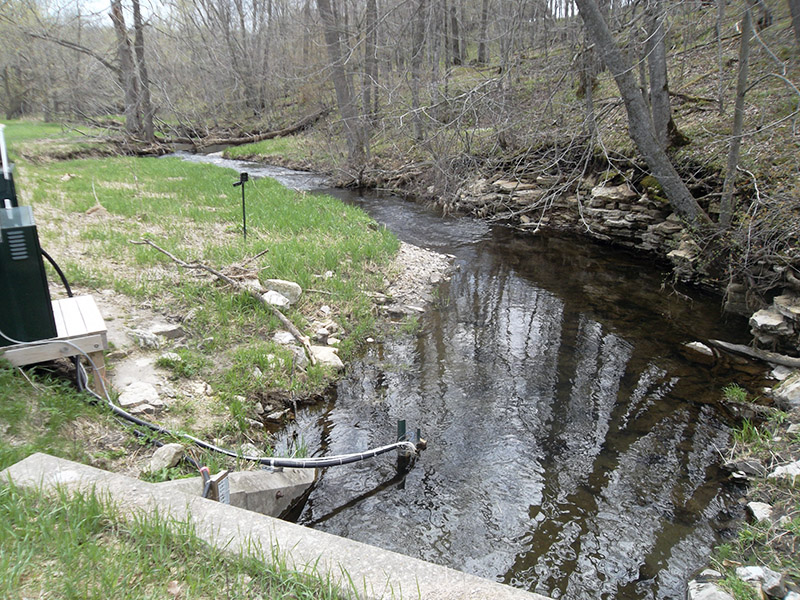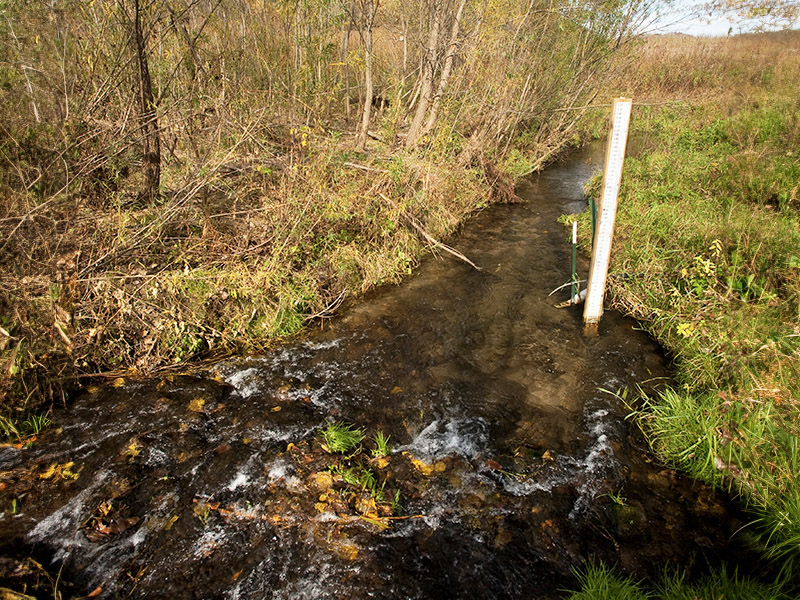Our journey began in 2009, when a diverse coalition formed the Root River Field to Stream Partnership (RRFSP). Our mission is to study the intricate and complex relationships between agricultural practices and runoff and water quality within the local rivers, streams and drinking water sources in the Root River Watershed. Through vigilant monitoring spanning diverse scales, we analyze and track the origins, timing and amounts of runoff, sediment, and nutrient loss.
Together, local farmers and dedicated project partners are addressing the following key questions:
Project Partners and Funding
The Root River Field to Stream Partnership is comprised of farmers and their advisors, the Minnesota Department of Agriculture, Minnesota Agricultural Water Resources Center, The Nature Conservancy, Fillmore County, Mower County and the Root River (Houston County) Soil and Water Conservation Districts, state agencies, and academic researchers.
Water Quality Monitoring
The Root River Watershed is located in Southeastern Minnesota. The watershed covers over 1 million acres and has very diverse landscape features and farming practices. For this reason, the watershed has been divided into three smaller areas referred to as sub-watersheds. At least one edge-of-field and one in-stream monitoring station is located in each of these 3 areas:
South Branch of Root River Headwaters
Located in the glacial till uplands, this sub-watershed is nearly 2,800 acres and is dominated by flat terrain with poorly drained soils. Sub-surface pattern tile drainage is used to improve the farmability of soils in this watershed.
- The Headwaters sub-watershed does not consistently flow during the winter months and is only monitored during ice free periods (April 1st to November 1st) to avoid damage to the monitoring equipment.
- There are 16 farm operators in this sub-watershed. The average field size is 130 acres and the major crops grown are corn and soybeans. Approximately 91% of the watershed is managed for a corn and soybean rotation.
Crystal Creek
Located in the karst region, this sub-watershed is nearly 3,800 acres and is dominated by rolling hills made up of carbonate bedrock with distinct karst features such as sinkholes, sinking streams and groundwater springs.
- The Crystal Creek sub-watershed is a spring-fed trout stream that allows for year-round monitoring.
- Monitoring of groundwater springs is conducted to characterize surface-groundwater interactions common in the region.
- There are 19 farm operators in this sub-watershed. The average field size is 25 acres and the major crops grown are corn, soybeans and alfalfa.
Bridge Creek
Located in the bluff land region, this sub-watershed is nearly 4,700 acres and the landscape consists of deeply dissected hills and valleys with steep forested slopes that often exceed 30%. This is where the Root River flows into the Mississippi River.
- The Bridge Creek sub-watershed is a spring-fed trout stream that allows for year-round monitoring.
- There are 15 farm operators in this sub-watershed. The average field size is 16 acres and the major crops grown are corn, soybeans and alfalfa.
The Root River Field to Stream Partnership is more than just collecting water samples. We’re helping provide relevant information to farmers, landowners and their advisors which is helping accelerate the adoption of precision conservation practices.

